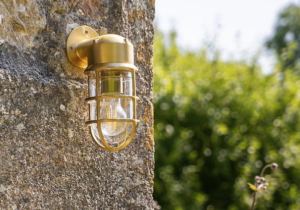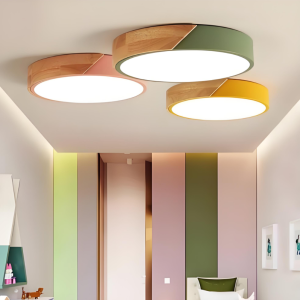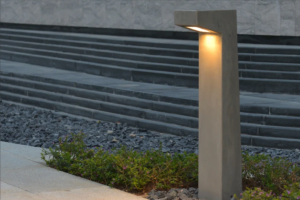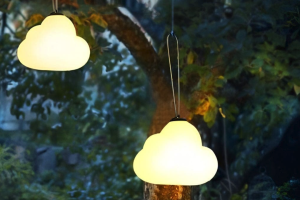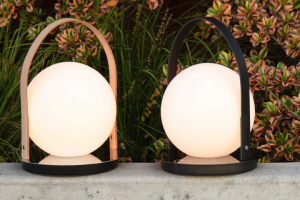Nordic Creative Lighting: Illuminating Design
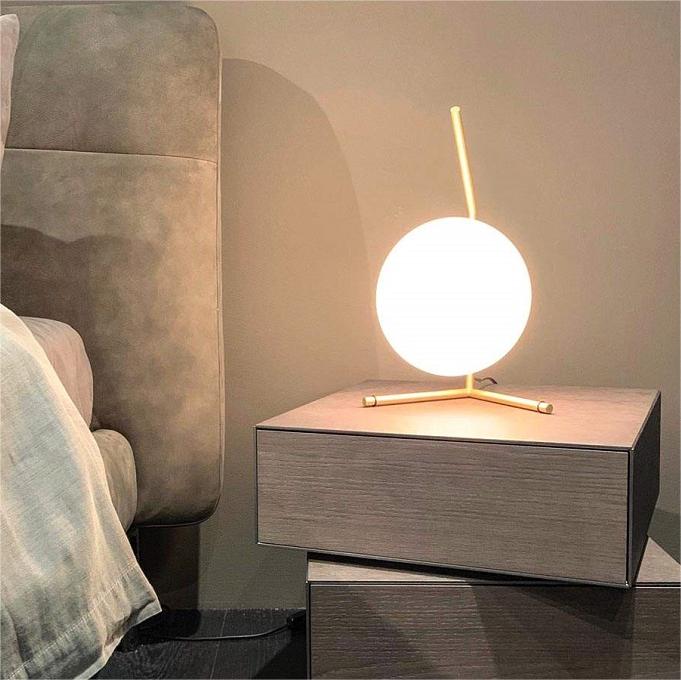
Nordic creative lighting has a rich history dating back to the early 20th century. The Nordic countries, comprising Denmark, Finland, Iceland, Norway, and Sweden, are renowned for their innovative and functional design aesthetic. In the 1920s and 1930s, designers like Poul Henningsen from Denmark and Alvar Aalto from Finland revolutionized the lighting industry with minimalist and functional designs.
Henningsen’s iconic PH lamp, featuring layered shades to eliminate glare, and Aalto’s organic and sculptural lighting pieces, laid the foundation for the Nordic design movement. The mid-20th century saw Nordic design aesthetics gain international recognition. Designers such as Arne Jacobsen and Poul Kjærholm from Denmark, and Tapio Wirkkala from Finland, made significant contributions to lighting design.
Their use of natural materials, clean lines, and focus on functionality became hallmarks of Nordic design. Today, Nordic creative lighting remains at the forefront of the design world, with companies like Louis Poulsen, Muuto, and Secto Design continuing to produce innovative and timeless lighting creations.
The Influence of Nature on Nordic Lighting Design
Natural Light and Atmosphere
This has resulted in a strong emphasis on diffused and indirect lighting Iikooo that creates a warm and inviting atmosphere. The goal is to recreate the soft, gentle light that is characteristic of the Nordic countries’ natural environments.
Sustainable Materials
The use of natural materials such as wood, glass, and metal in lighting design is a direct reflection of the Nordic connection to nature. This choice is not only aesthetically pleasing but also sustainable. By utilizing materials that are abundant in the region, designers are able to create lighting pieces that are both beautiful and environmentally friendly.
Organic Shapes and Forms
The influence of nature can also be seen in the organic shapes and forms found in many Nordic lighting designs. Whether it’s the fluid lines of a pendant lamp or the sculptural silhouette of a floor lamp, these designs often evoke elements of the natural world. Overall, the influence of nature on Nordic lighting design is undeniable and continues to be a driving force behind the innovation and creativity in the industry.
The Role of Sustainability in Nordic Lighting
Sustainability has always been at the forefront of Nordic design principles, and this is especially true in the realm of lighting. With a strong emphasis on using natural materials and creating timeless designs that will last for generations, sustainability is deeply ingrained in Nordic lighting design. Many Nordic lighting companies prioritize sustainable practices such as using energy-efficient LED technology, sourcing materials from responsibly managed forests, and designing products that are easily recyclable at the end of their lifespan.
In addition to sustainable materials and production methods, many Nordic lighting designers also prioritize longevity and durability in their creations. By focusing on creating high-quality products that stand the test of time, they aim to reduce waste and minimize the environmental impact of their designs. Furthermore, the timeless aesthetic of Nordic lighting means that these pieces are less likely to go out of style and end up in landfills.
As sustainability continues to be a global priority, Nordic lighting design serves as an inspiring example of how beautiful and functional products can also be environmentally conscious. Sustainability has always been at the forefront of Nordic design principles, and this is especially true in the realm of lighting. With a strong emphasis on using natural materials and creating timeless designs that will last for generations, sustainability is deeply ingrained in Nordic lighting design.
Many Nordic lighting companies prioritize sustainable practices such as using energy-efficient LED technology, sourcing materials from responsibly managed forests, and designing products that are easily recyclable at the end of their lifespan. In addition to sustainable materials and production methods, many Nordic lighting designers also prioritize longevity and durability in their creations. By focusing on creating high-quality products that stand the test of time, they aim to reduce waste and minimize the environmental impact of their designs.
Furthermore, the timeless aesthetic of Nordic lighting means that these pieces are less likely to go out of style and end up in landfills. As sustainability continues to be a global priority, Nordic lighting design serves as an inspiring example of how beautiful and functional products can also be environmentally conscious.
Nordic Lighting in Interior Design
Nordic lighting plays a crucial role in interior design by not only providing illumination but also serving as a focal point or statement piece within a space. The clean lines and minimalist aesthetic of Nordic lighting make it a versatile choice for a wide range of interior styles, from modern and contemporary to traditional and Scandinavian-inspired. Whether it’s a sleek pendant light above a dining table or a sculptural floor lamp in a living room, Nordic lighting has the ability to enhance the overall ambiance of a room while adding a touch of elegance and sophistication.
Furthermore, Nordic lighting is often designed with functionality in mind, making it an ideal choice for interior spaces where both form and function are important. Whether it’s adjustable task lighting for a home office or ambient lighting for a cozy reading nook, Nordic lighting offers practical solutions without compromising on style. Additionally, the use of natural materials in Nordic lighting designs can help bring warmth and texture to interior spaces, creating a harmonious balance between functionality and aesthetics.
Nordic lighting plays a crucial role in interior design by not only providing illumination but also serving as a focal point or statement piece within a space. The clean lines and minimalist aesthetic of Nordic lighting make it a versatile choice for a wide range of interior styles, from modern and contemporary to traditional and Scandinavian-inspired. Whether it’s a sleek pendant light above a dining table or a sculptural floor lamp in a living room, Nordic lighting has the ability to enhance the overall ambiance of a room while adding a touch of elegance and sophistication.
Furthermore, Nordic lighting is often designed with functionality in mind, making it an ideal choice for interior spaces where both form and function are important. Whether it’s adjustable task lighting for a home office or ambient lighting for a cozy reading nook, Nordic lighting offers practical solutions without compromising on style. Additionally, the use of natural materials in Nordic lighting designs can help bring warmth and texture to interior spaces, creating a harmonious balance between functionality and aesthetics.
The Use of Technology in Nordic Lighting
While traditional craftsmanship and natural materials are hallmarks of Nordic lighting design, technology also plays an important role in shaping modern innovations in the industry. The integration of LED technology has allowed for greater energy efficiency and flexibility in design, leading to more sustainable and versatile lighting solutions. LED lights have become increasingly popular in Nordic lighting due to their long lifespan, low energy consumption, and ability to produce various color temperatures to mimic natural light.
In addition to LED technology, smart lighting systems have also made their way into Nordic lighting design. These systems allow users to control their lights remotely through mobile apps or voice commands, offering greater convenience and customization options for creating different moods within a space. By combining traditional craftsmanship with cutting-edge technology, Nordic lighting designers are able to push boundaries and create innovative solutions that meet the demands of modern living while staying true to their design principles.
While traditional craftsmanship and natural materials are hallmarks of Nordic lighting design, technology also plays an important role in shaping modern innovations in the industry. The integration of LED technology has allowed for greater energy efficiency and flexibility in design, leading to more sustainable and versatile lighting solutions. LED lights have become increasingly popular in Nordic lighting due to their long lifespan, low energy consumption, and ability to produce various color temperatures to mimic natural light.
In addition to LED technology, smart lighting systems have also made their way into Nordic lighting design. These systems allow users to control their lights remotely through mobile apps or voice commands, offering greater convenience and customization options for creating different moods within a space. By combining traditional craftsmanship with cutting-edge technology, Nordic lighting designers are able to push boundaries and create innovative solutions that meet the demands of modern living while staying true to their design principles.
The Impact of Nordic Lighting on Well-being
The Science Behind Nordic Lighting
Furthermore, studies have shown that exposure to natural light can have significant effects on mood regulation and overall well-being. By incorporating elements of natural light into their designs, such as color temperature variations or dynamic lighting control systems that mimic daylight patterns, Nordic lighting designers are able to create environments that promote mental alertness during the day and relaxation in the evening.
Creating Comfortable Environments
The use of diffused and indirect lighting helps reduce glare and create a comfortable environment that is easy on the eyes. This type of gentle illumination can help reduce eye strain and fatigue while promoting relaxation and comfort within interior spaces.
Prioritizing Physical and Emotional Well-being
As our understanding of how light affects human health continues to evolve, Nordic lighting remains at the forefront of creating spaces that prioritize both physical comfort and emotional well-being. By incorporating the principles of Nordic lighting into interior design, individuals can create environments that support their overall health and well-being.
The Future of Nordic Creative Lighting
As we look towards the future of Nordic creative lighting, it’s clear that sustainability will continue to be a driving force behind innovation in the industry. With an increasing focus on environmental consciousness and energy efficiency, we can expect to see even more advancements in LED technology as well as new approaches to recycling and upcycling materials in lighting design. Additionally, as smart home technology becomes more integrated into our daily lives, we can anticipate further developments in smart lighting systems that offer greater customization options for users.
Furthermore, as our understanding of how light affects human health continues to evolve, we can expect to see more research-driven approaches to designing lighting solutions that prioritize well-being. This may include advancements in circadian rhythm-based lighting systems or biophilic designs that further integrate elements of nature into interior spaces. Overall, the future of Nordic creative lighting looks bright as designers continue to push boundaries while staying true to their roots of timeless aesthetics, functionality, and environmental responsibility.
As we look towards the future of Nordic creative lighting, it’s clear that sustainability will continue to be a driving force behind innovation in the industry. With an increasing focus on environmental consciousness and energy efficiency, we can expect to see even more advancements in LED technology as well as new approaches to recycling and upcycling materials in lighting design. Additionally, as smart home technology becomes more integrated into our daily lives, we can anticipate further developments in smart lighting systems that offer greater customization options for users.
Furthermore, as our understanding of how light affects human health continues to evolve, we can expect to see more research-driven approaches to designing lighting solutions that prioritize well-being. This may include advancements in circadian rhythm-based lighting systems or biophilic designs that further integrate elements of nature into interior spaces. Overall, the future of Nordic creative lighting looks bright as designers continue to push boundaries while staying true to their roots of timeless aesthetics, functionality, and environmental responsibility.

